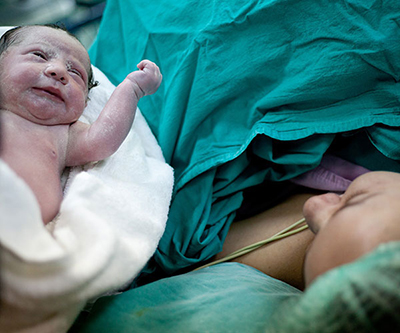
NICHD conducts and supports research to understand typical labor and delivery. It also funds to studies of preterm labor and birth and conditions like HIV that may affect the birth process.
Some findings from NICHD labor and delivery research include the following:
- Women spend longer in labor now than they did 50 years ago.
- Women with obesity and overweight spend more time in labor than women at normal weight.
- Risks from labor after a prior cesarean delivery (C-section) are low.
- If there are no medical reasons to deliver earlier, delivery at 39 weeks of pregnancy benefits mother and baby.
- Vaginal delivery is successful even after prolonged labor.
- Inducing labor in healthy women after 39 weeks of pregnancy reduces the need for C-section.
- Delayed pushing in the second stage of labor does not affect vaginal birth rates.
NICHD research on improving and ensuring the safety of C-sections has helped healthcare providers fine-tune their use of the procedure. For example, NICHD research showed that epidural pain relief does not increase the likelihood of C-section and that antibiotics taken before an unplanned C-section reduce infection rates. Other NICHD research showed that vaginal birth after a prior C-section—called VBAC—is safe for most women.
The size of the fetus is a primary factor in decisions about labor and delivery. A larger fetus may need to be delivered by C-section or could require assistance for a vaginal delivery. NICHD research on fetal growth patterns has helped inform growth standards and obstetric practices. One set of NICHD studies on fetal growth found racial and ethnic differences that were not accounted for in current standards used by healthcare providers to make decisions. Other research examined how maternal obesity affects fetal growth and linked maternal obesity to fetal overgrowth.
The Global Network for Women’s and Children’s Health Research, co-funded by NICHD and the Bill & Melinda Gates Foundation, studies treatments for labor and delivery problems that are more common in developing countries. For instance, postpartum hemorrhage—severe blood loss after childbirth—is a leading cause of maternal death in low-resource countries. Global Network studies found that the drug misoprostol offered an inexpensive and safe way to prevent the condition, and that giving oxytocin to women who delivered vaginally helped to stop bleeding and prevent postpartum hemorrhage in these settings.
 BACK TO TOP
BACK TO TOP